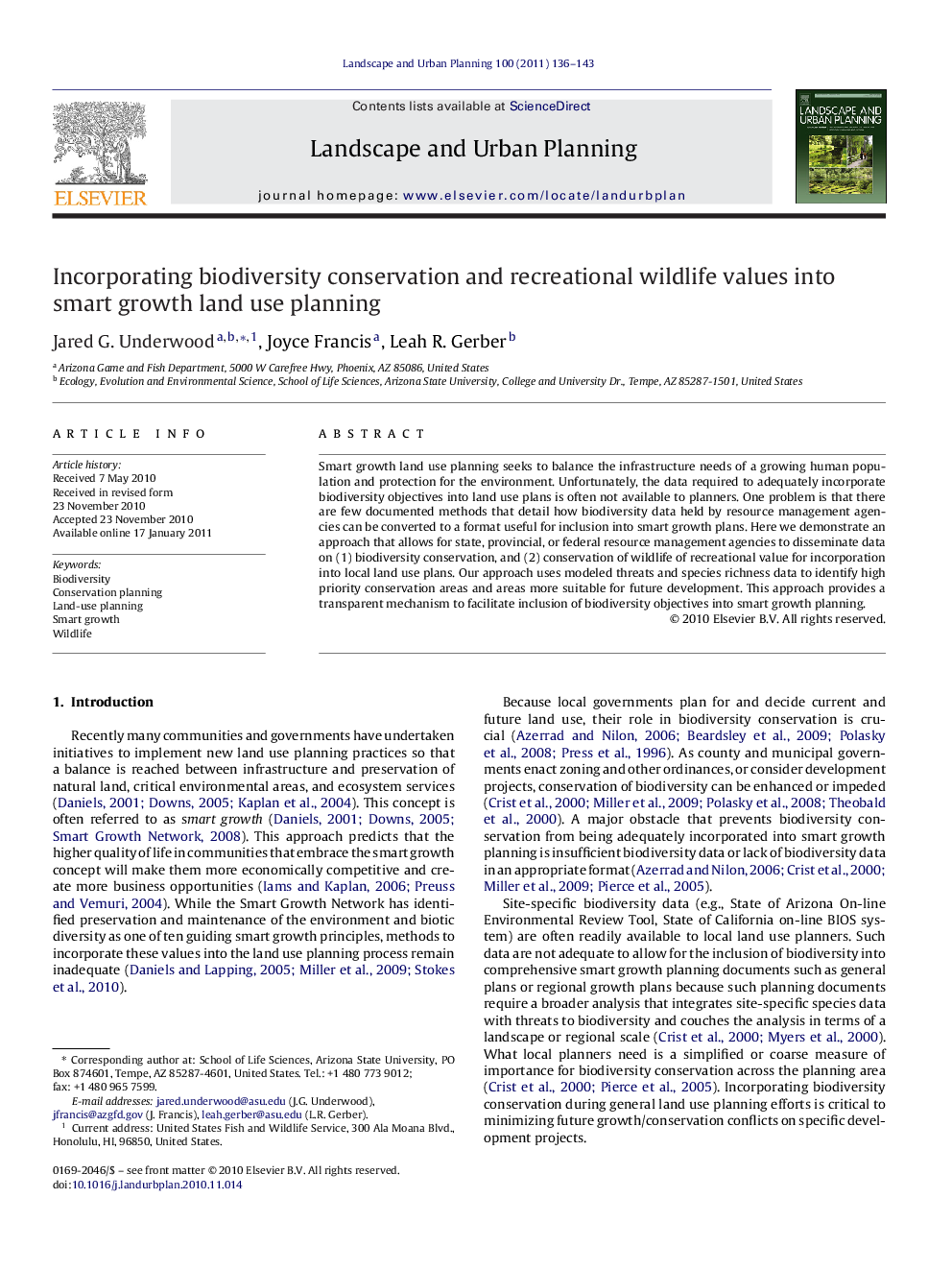| Article ID | Journal | Published Year | Pages | File Type |
|---|---|---|---|---|
| 1049964 | Landscape and Urban Planning | 2011 | 8 Pages |
Smart growth land use planning seeks to balance the infrastructure needs of a growing human population and protection for the environment. Unfortunately, the data required to adequately incorporate biodiversity objectives into land use plans is often not available to planners. One problem is that there are few documented methods that detail how biodiversity data held by resource management agencies can be converted to a format useful for inclusion into smart growth plans. Here we demonstrate an approach that allows for state, provincial, or federal resource management agencies to disseminate data on (1) biodiversity conservation, and (2) conservation of wildlife of recreational value for incorporation into local land use plans. Our approach uses modeled threats and species richness data to identify high priority conservation areas and areas more suitable for future development. This approach provides a transparent mechanism to facilitate inclusion of biodiversity objectives into smart growth planning.
Research highlights▶ We demonstrate an approach that allows resource management agencies to disseminate data on biodiversity conservation for incorporation into smart growth land use plans. ▶ Our approach uses modeled threats and species richness data to identify high priority conservation areas and areas more suitable for future development. ▶ This approach provides simple end products that facilitate inclusion of environmental values into smart growth planning.
